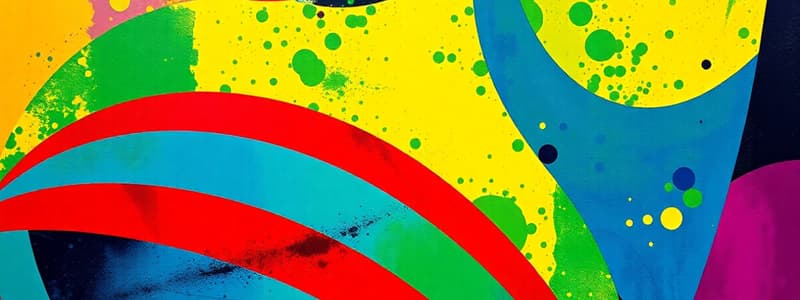Podcast
Questions and Answers
Which of the following represents the set of all natural numbers less than 10 using the roster method?
Which of the following represents the set of all natural numbers less than 10 using the roster method?
- {1, 2, 3, 4, 5, 6, 7, 8, 9, 10}
- {0, 1, 2, 3, 4, 5, 6, 7, 8, 9}
- {1, 2, 3, 4, 5, 6, 7, 8, 9} (correct)
- {0, 1, 2, 3, 4, 5, 6, 7, 8, 9, 10}
The symbol '∈' represents ______ in set theory.
The symbol '∈' represents ______ in set theory.
membership
What are the two main ways to represent a set?
What are the two main ways to represent a set?
Roster method and set-builder notation
The set of all even numbers is a finite set.
The set of all even numbers is a finite set.
Match the following sets with their corresponding symbols:
Match the following sets with their corresponding symbols:
The intersection of two sets always results in a set with fewer elements than either of the original sets.
The intersection of two sets always results in a set with fewer elements than either of the original sets.
Flashcards
Set
Set
A well-defined collection of objects with no repeated elements.
Roster Representation
Roster Representation
All elements of a set listed within curly brackets, e.g., A = {1, 2, 3}.
Set-Builder Notation
Set-Builder Notation
Describes elements based on rules, e.g., A = {x : x ∈ N, x < 6}.
Power Set
Power Set
Signup and view all the flashcards
Proper Subset
Proper Subset
Signup and view all the flashcards
Improper Subset
Improper Subset
Signup and view all the flashcards
Universal Set
Universal Set
Signup and view all the flashcards
Set Operations
Set Operations
Signup and view all the flashcards
Study Notes
Sets
- Sets are well-defined collections of objects.
- Elements within a set are not repeated.
- Sets can be represented using roster or set-builder notation.
- Roster notation lists all elements within curly brackets.
- Set-builder notation describes the elements using a rule.
Types of Sets
- Empty Set (Null Set): A set with no elements (denoted by Ø or {}).
- Finite Set: A set with a countable number of elements.
- Infinite Set: A set with an uncountable number of elements.
- Equal Sets: Sets containing the same elements.
- Subset: Every element of set A is also an element of set B.
- Proper Subset: Set A is a subset of set B, but A is not equal to B.
- Superset: Set B contains all elements of set A.
- Disjoint Sets: Sets with no common elements.
Set Operations
- Union (A∪B): All elements of set A or B (or both).
- Intersection (A∩B): Common elements in sets A and B.
- Difference (A–B): Elements in A but not in B.
- Complement (A'): Elements that are not in A (within a universal set).
Intervals
- Closed Interval [a, b]: Includes a and b.
- Open Interval (a, b): Does not include a or b.
- Half-Open/Half-Closed Interval: Includes or excludes one endpoint.
Venn Diagrams
- Visual representation of sets and their relationships.
- Used to show set operations (union, intersection, difference).
Power Set
- Set of all subsets of a given set.
- Number of elements in a power set with n elements = 2n.
De Morgan's Laws
- (A∪B)' = A'∩B'
- (A∩B)' = A'∪B'
Cardinality
- Number of elements in a set (denoted as n(A)).
Set Properties
- Commutative property for union and intersection
- Associative property for union and intersection
- Distributive properties relating to intersections and unions.
Practical Applications of Sets
- Practical problems involve applying set theory to real-world contexts e.g., in daily life or in other subjects like probability and statistics.
Studying That Suits You
Use AI to generate personalized quizzes and flashcards to suit your learning preferences.




